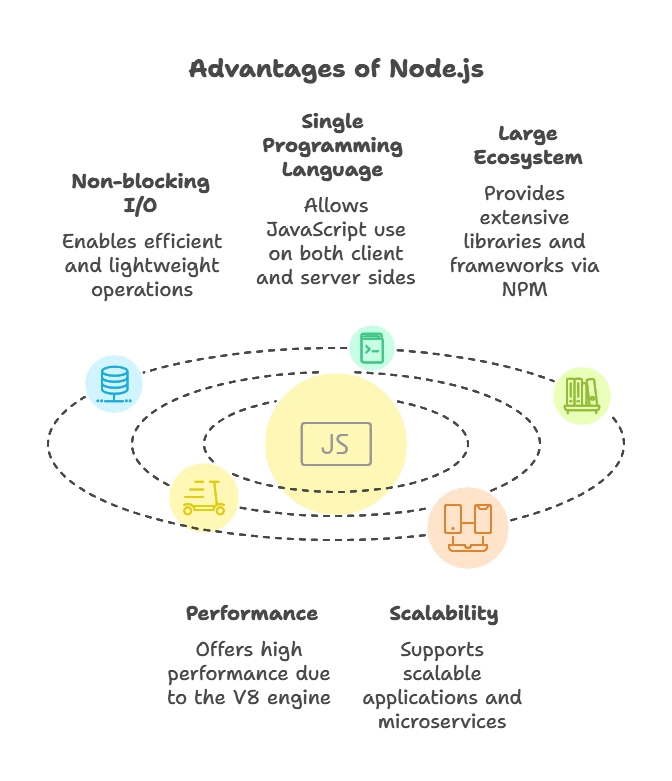Introduction to Node.js
Node.js is a runtime environment that allows you to execute JavaScript code server-side. Traditionally, JavaScript was only used for client-side scripting in web browsers, but with Node.js, you can use JavaScript to build server-side applications as well. Node.js is built on Chrome's V8 JavaScript engine, which makes it fast and efficient.
History and Evolution of Node.js
Node.js was created by Ryan Dahl in 2009. He introduced Node.js at the European JSConf, showcasing its ability to handle thousands of concurrent connections with minimal overhead on a single process. Over the years, Node.js has grown significantly, with major versions being released regularly, incorporating new features, performance improvements, and stability fixes.
Why Use Node.js?
There are several reasons why developers choose Node.js:
- Non-blocking I/O: Node.js uses an event-driven, non-blocking I/O model which makes it lightweight and efficient.
- Single Programming Language: You can use JavaScript for both client-side and server-side programming.
- Large Ecosystem: The Node Package Manager (NPM) hosts thousands of libraries and frameworks to extend Node.js functionality.
- Performance: Built on the V8 engine, Node.js applications are very performant.
- Scalability: Node.js is designed to be scalable and is well-suited for microservices architectures.

Node.js is a powerful and versatile platform for building server-side applications. Its non-blocking I/O model, single language for both client and server, extensive ecosystem, and high performance make it a popular choice for developers. From basic scripting to building complex, real-time applications, Node.js provides the tools and capabilities needed to create efficient and scalable software solutions. Whether you're working with files, databases, or creating web servers, Node.js offers a rich set of modules and frameworks to help you achieve your goals. Happy Coding! 🚀
